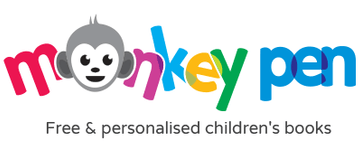Classroom Magic: 15 Educational Games Using Your Coloring Pages
Nov 14, 2025
Coloring pages are often seen as simple art activities, but in truth, they can be powerful learning tools. For teachers and homeschoolers, they open the door to fun and engaging ways to teach important skills without students even realizing they are learning. If you have the right ideas, coloring pages can be transformed from quiet time fillers into interactive lessons that encourage critical thinking, creativity, and teamwork.
In this blog, we are going to discover 15 exciting learning coloring games that you can start immediately in your school classroom or homeschool setting. These school coloring activities are created to promote literacy, numeracy, creativity, and social skills. They also serve as excellent teacher resources for coloring for those who want versatile and affordable tools for everyday learning.
1. Color and Spell
Give each student a coloring page with objects or animals. As they color, ask them to spell the word aloud or write it on the back. This helps with both vocabulary and spelling practice.
2. Maths by Color
Give various colors, numbers, like 2 for red and 4 for blue. Then have students do math problems to determine which colors to use. These learning coloring games involve math in a way that is more fun and memorable.
3. Story Starters
Assign a page for every child to color on a particular theme, maybe an insect or vehicle or a magical castle. After coloring, ask kids to write a small story of their own based on the image. This promotes creative thinking and language skills.
4. Group Mural
Choose a large picture on an interesting theme, divide them into portions, and assign each part to a student. On completing the coloring task, assemble them to create a group mural. Encouraging this type of group activity in classrooms promotes teamwork and participation and teaches children about cooperation towards achieving a common goal.
5. Color and Classify
Have the students sort their pages by animals, plants, shapes, or cultural subjects after coloring. It's a fun introduction to sorting and categorizing, critical beginning science and mathematics skills.
6. Hidden Letters and Numbers
Design coloring sheets with letters or numbers hidden within the design. As students color, they discover and circle them. This teaches letter and number recognition in a positive way.
7. Vocabulary Bingo
Instead of numbers, fill a bingo card with words from your coloring page theme. Students color the items, then mark their bingo card as the words are called out. This is a favorite among teacher resources coloring.
8. Color to Learn Emotions
Provide pages with faces or characters. Color each feeling, like happy with yellow and sad with blue. While they color, talk about feelings and expressing emotions. It’s a sensitive way to aid social-emotional learning.
9. Cultural Exploration
Provide pages linked to countries, festivals, or traditions. As children color, introduce cultural facts and stories. This blends geography, history, and art into one simple activity.
10. Math Color Races
Make coloring pages using numbers or letters. Start reading a math-related quest, “Paint squares with 4 sides in blue.” Children rush to choose the right shade. This type of challenge encourages competency while pushing their energy levels up and reinforcing early key concepts.
11. Nature Scavenger Coloring
Distribute nature-themed pages, i.e., gardens or forests. As a part of the game, students need to identify real-life examples outside, such as a flower, leaf, or insect, to correspond to their choice of coloring. A wonderful combination of art and outdoor adventure.
12. Mystery Page Reveal
Cover instructions with clues (e.g., “The sun is yellow, but only if it’s daytime”). Students solve puzzles to decide which colors to use. It encourages reading and critical thinking.
13. Compare and Color
Assign students to work in small groups or pairs to color the same page. After you are done, compare your options. Comparing and contrasting encourages attention to detail and tolerance for different points of view.
14. Alphabet Color Hunt
Distribute an object-rich page. Children are required to color only items that start with a particular letter. Early readers will benefit so much from this educational coloring game.
15. Finalize the Design
Showcase incomplete patterns or mandalas. Students are required to use their preferred colors or illustrations to complete the design. This enhances fine motor skills, creativity, and concentration.
Why Coloring Pages Are So Successful in Education
Coloring is not always given the respect it deserves, but it combines many valuable learning advantages:
- Fine motor skills: Grasping crayons or pencils helps develop hand muscles for more proficient handwriting.
- Focus and Perseverance: Students gain the ability to slow down and pay attention to specifics.
- Expressiveness: Color choices give voice to oneself without using words.
- Multidisciplinary learning: From science and social studies to literacy and numeracy, coloring can be linked to any subject.
Using classroom coloring activities is an affordable way for parents and teachers to enhance lessons without spending a lot of money on supplies.
Useful Advice for Instructors and Homeschoolers
- Keep a library of pages: Collect a wide range of printable designs sorted by theme (animals, seasons, transport, religion, etc.).
- Mix in digital options: Many children enjoy coloring apps, so balance printables with digital coloring tasks.
- Promote sharing: Showcase completed work on walls or produce a “classroom coloring book” with student input.
- Add to the lessons: Coloring pages can be used to introduce a topic or to help students reflect on what they have learned at the beginning or end of a lesson.
By employing these strategies, coloring stops being merely an activity and instead becomes an essential part of your teacher resource coloring toolkit.
Expanding the Educational Market with Coloring Pages
Websites like Monkey Pen transform coloring into a creative task more than a leisure pursuit. Using educational coloring games, parents and educators gain access to readily printable resources to add extra fun to their regular learning. Coloring replaces normal worksheets that can be quite boring, because the actual art fosters creativity and excitement in everyday lessons.
These coloring pages serve as a flexible educational tool based on subject; that is, they can be used for storytelling, learning math concepts, comprehending science and technology, and also helping in emotional development. Suitable for every age group, from early years to primary grade levels, they contribute a lot to their skill development and learning.
For teachers and caretakers who are looking for a budget-friendly tool for education, our free coloring pages offer maximum benefits. A single sheet can be utilized in multiple ways based on imagination.
Concluding Remarks
Coloring does not mean simply filling in shapes; it is all about developing creativity, promoting literacy, and building teamwork. These classroom coloring activities can enhance your lessons, whether you're homeschooling or in a traditional classroom. With the right teacher resources for coloring, you’ll find that coloring pages are not just fun; they are a gateway to better engagement and deeper understanding.
So, the next time you hand out a coloring sheet, don't think you're just giving your kids something to kill a few minutes. You are offering them opportunities to spell, count, dream, and connect. That is classroom magic at its finest.
Explore our array of free coloring books and printable coloring pages that make learning fun and magical. You can also check out our collections of free color-by-numbers printable and dot-to-dot pdf pages that promote thinking in kids.


